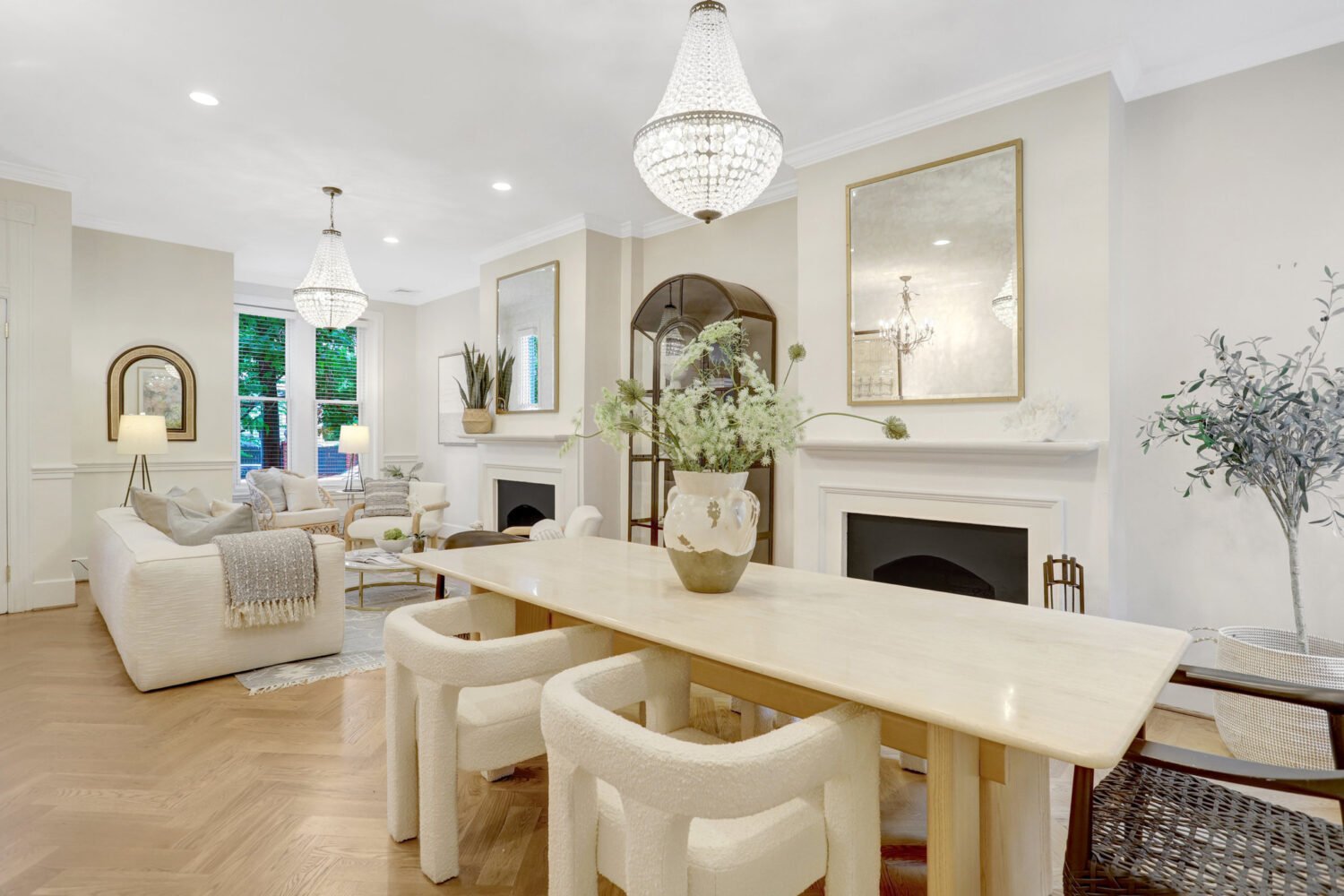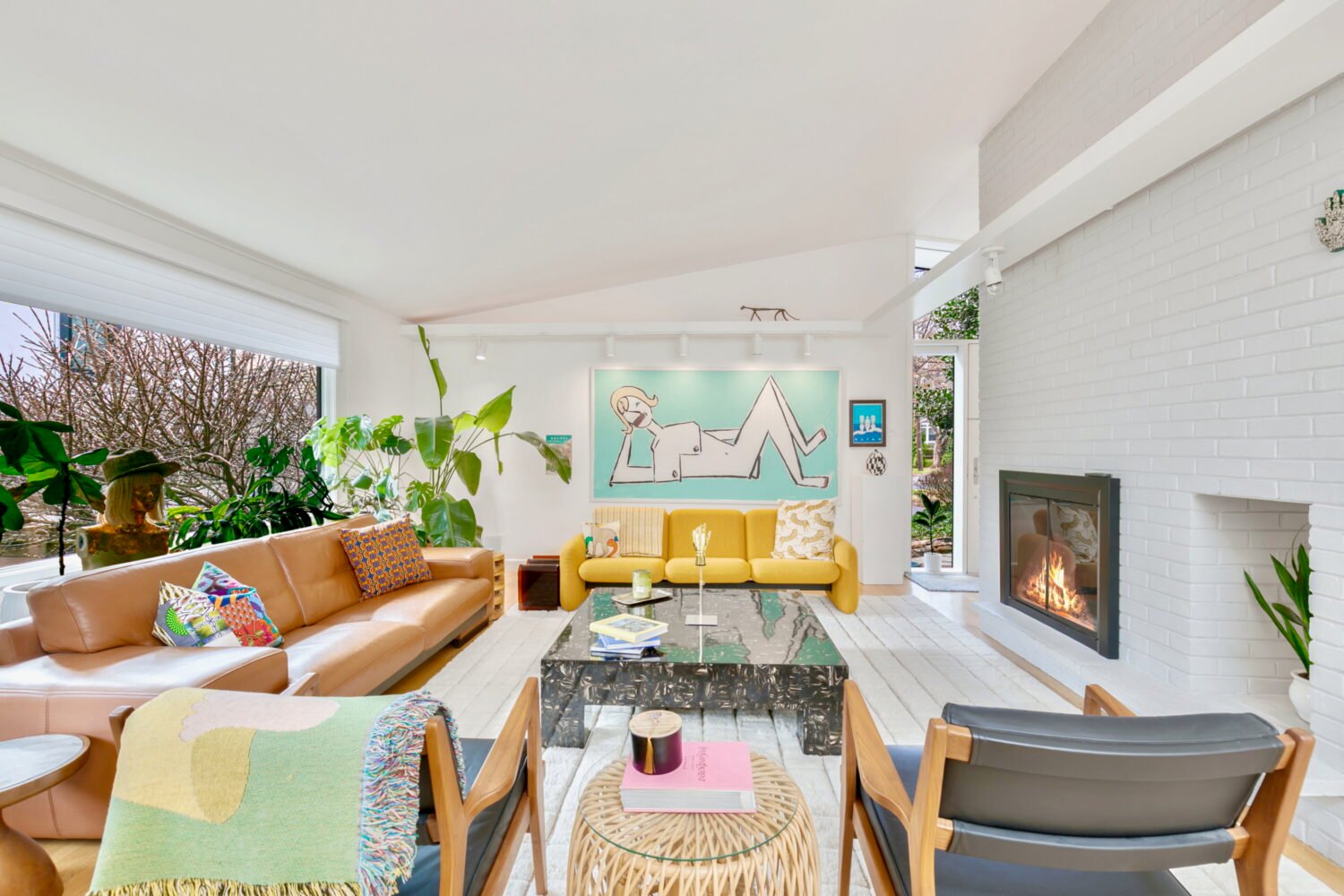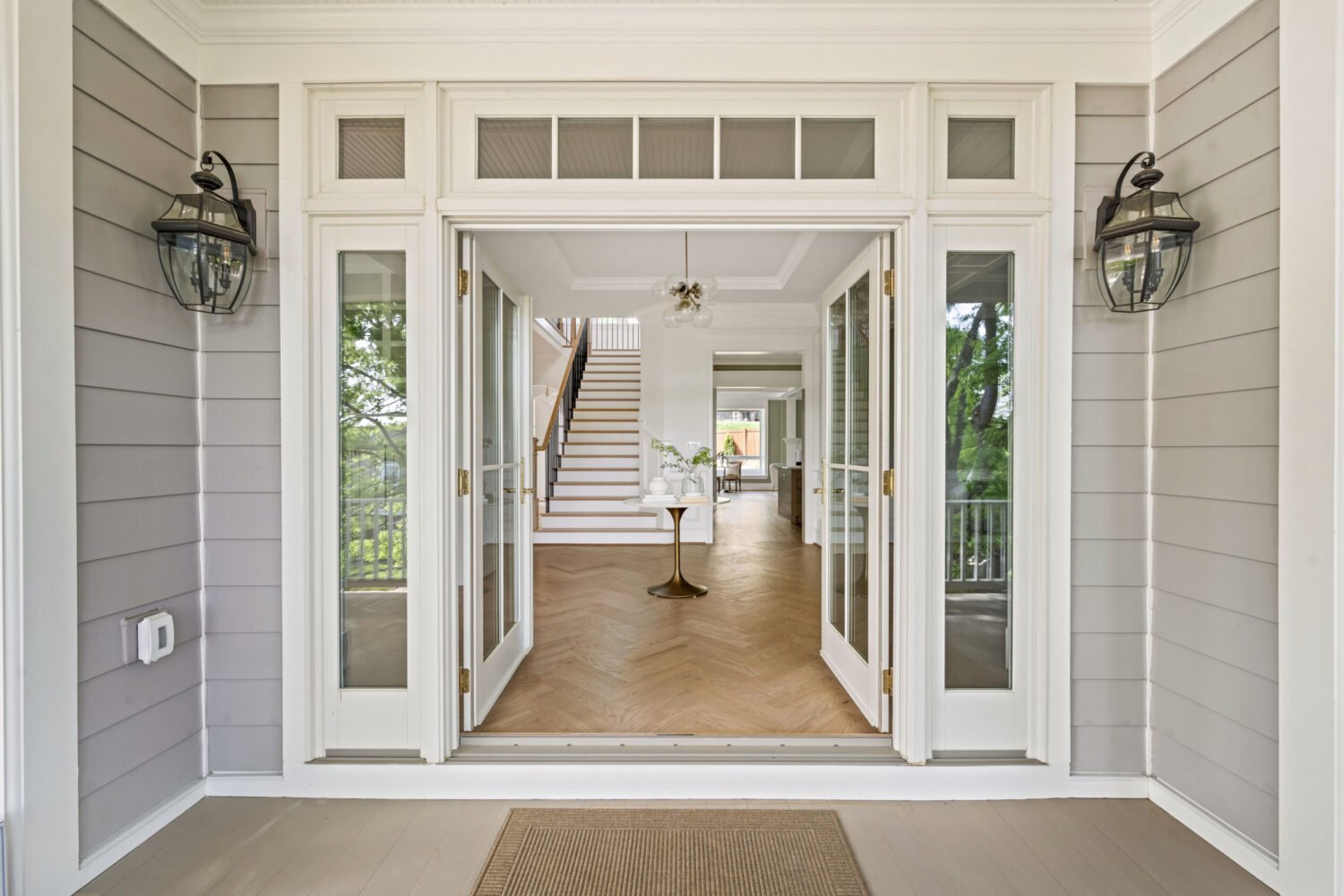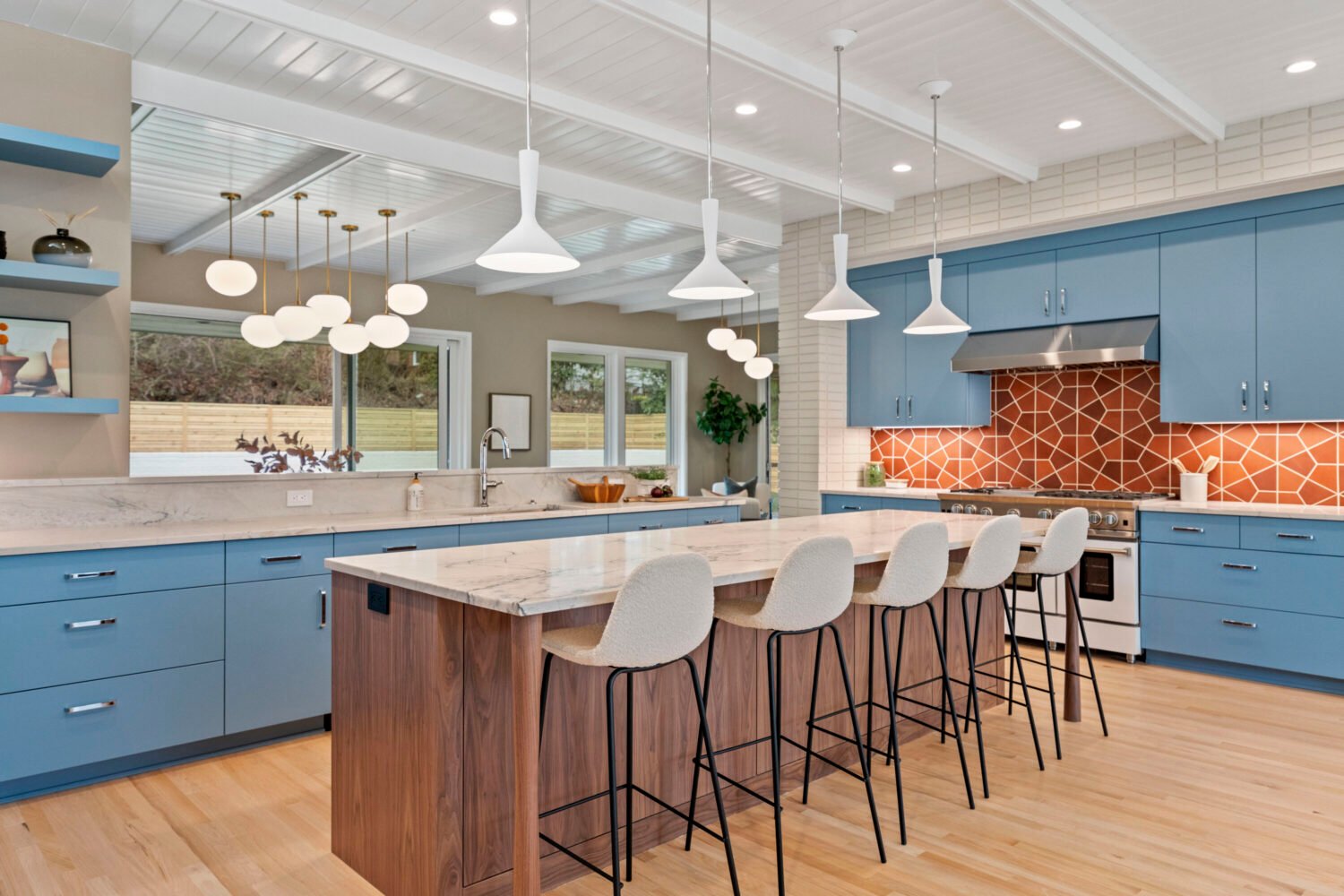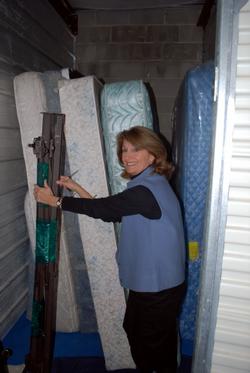
How long have you been a home-stager and how did you come into the profession?
My background is in interior design, and I’ve been a designer since 1986. About four or five years ago, a friend who was a real-estate agent had to sell a house that had been on the market for the better part of a year. The owner had tried to sell it himself, and then when he was unsuccessful he gave the listing to my friend.
It was in Chevy Chase and it was nice, but it had been lived in for 70 years by an older lady, so it was sad. My friend called and said, “He’s given me permission to paint, and I’d really like your help.” We put little things in the kitchen, towels and soaps in the bathroom, and left the bedrooms empty. It sold in a week.
I prefer home-staging to interior design because interior design is specific to the person. In home-staging, I just answer to myself. I bring my stuff in, and then when the house sells I take it out and put it back in storage.
Do you use your own furniture?
I started to build up an inventory, and I now have three storage-warehouse units. We’ve had as many as six jobs going at once—that really brings the warehouse down to nothing. You have to have a critical mass of living-room, dining-room, and family-room furniture. Those are the first rooms you see when you walk into a place.
I’m always on the lookout for furniture. Everything I have is either cream, taupe, or beige—very quiet colors because they go everywhere.
What are the essential pieces and where do you buy them?
I almost always use sea-grass rugs because they’ll go anywhere. I’ve got them in all different sizes. I like to find small, old Oriental rugs for the front door or in the kitchen. I also have lots and lots of pillows—I can change a room by adding new pillows.
I like to go to Target for lamps, but I get my lampshades from really good specialty stores, so I’ll put an expensive shade on a cheap lamp. For bedding I go to HomeGoods. For glassware and kitchen accessories, I like Ikea.
Why would a seller hire a home-stager?
It really helps to have someone come in and say, “How can we make this house appeal to the most amount of people?” Once upon a time, before we had the Internet, you could have an empty room. In fact, houses were better when they were empty because otherwise they were cluttered with stuff. But the days of empty houses are gone. Now sellers go on the Internet and take virtual tours. Staging gives an empty house proportionality.
What’s the greatest challenge you face?
Making sellers understand that it’s not about their taste. I tell them, “You have to let go of the house. You have to pretend this house isn’t yours anymore.” That’s easier said than done. People feel that we’re saying that their house is ugly and nobody wants to buy it, but that’s not what we’re saying at all.
I always ask myself, “Who do I think is likely to buy this house?” Home-staging is about trying to get inside the head of the potential buyer. It can be really hard for sellers not to take it personally.
Has home-staging changed in recent years?
When the housing market was really strong, you would think you could sell a house even if there was dirty underwear on the floor. But I had just as much business when the market was good as I do now. The reason you hired a home-stager then was to get a higher price.
In today’s market, you stage because you want to be as competitive as possible. You want to create the best possible first impression when people walk through the door. I know there have been times when people haven’t bought a house because they didn’t like the wallpaper in the bedroom.
What are some simple or quick tricks home-stagers use to get a house ready for sale ASAP?
Try to create as much negative space as possible—clear out clutter, take down family pictures, remove some furniture. You don’t stage a house the way you live in it. When you live in a house, you need to have the furniture arranged a certain way; when you stage a house, you need to make the rooms feel wide open.
Thoroughly clean everything because when people come to look at your house, they look in your closets, too. Rearrange the furniture so it creates a good traffic flow. Simplify—take all that stuff off the mantle in the living room and replace it with two pots of ivy, a mirror, and a small picture.







